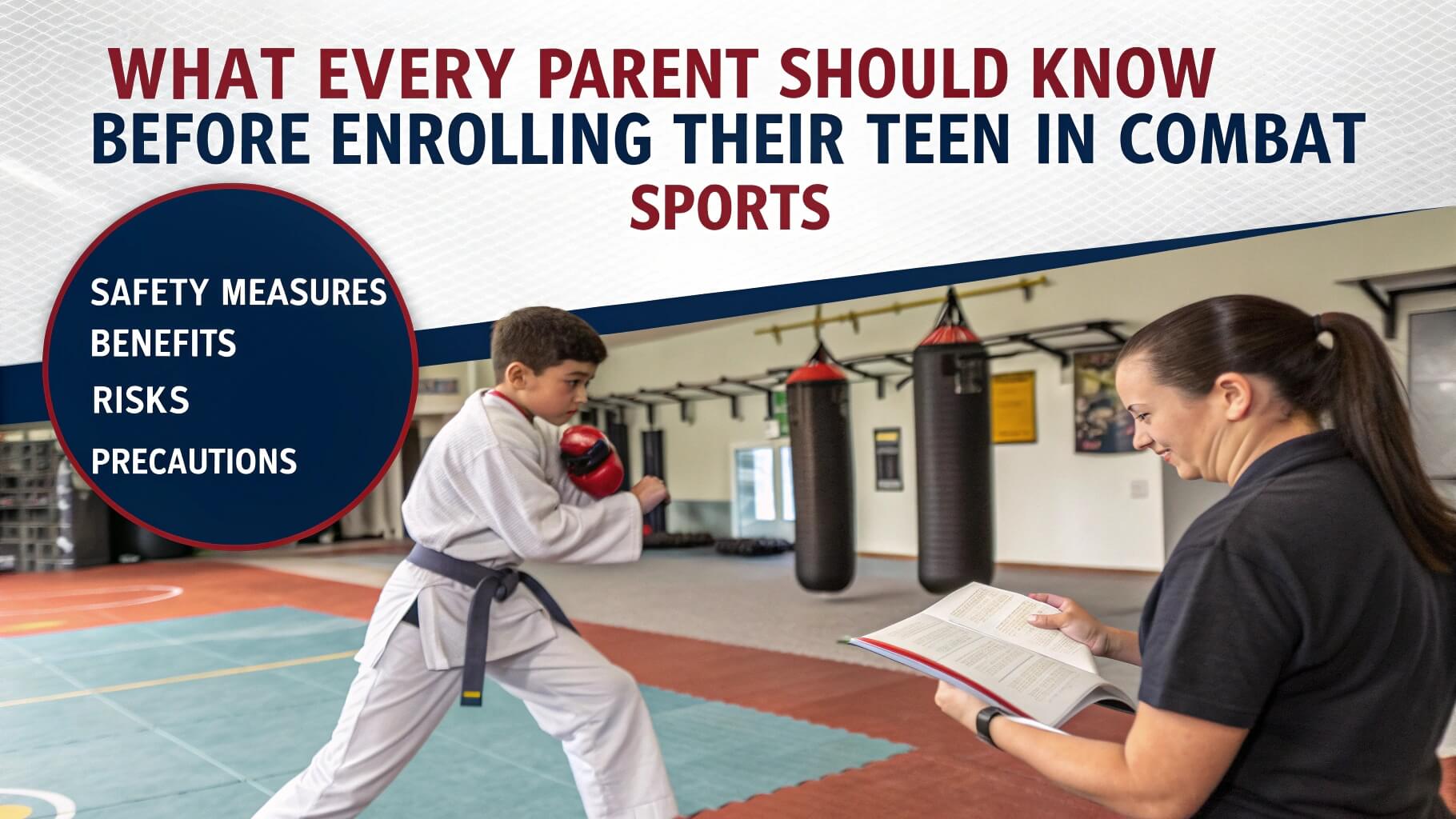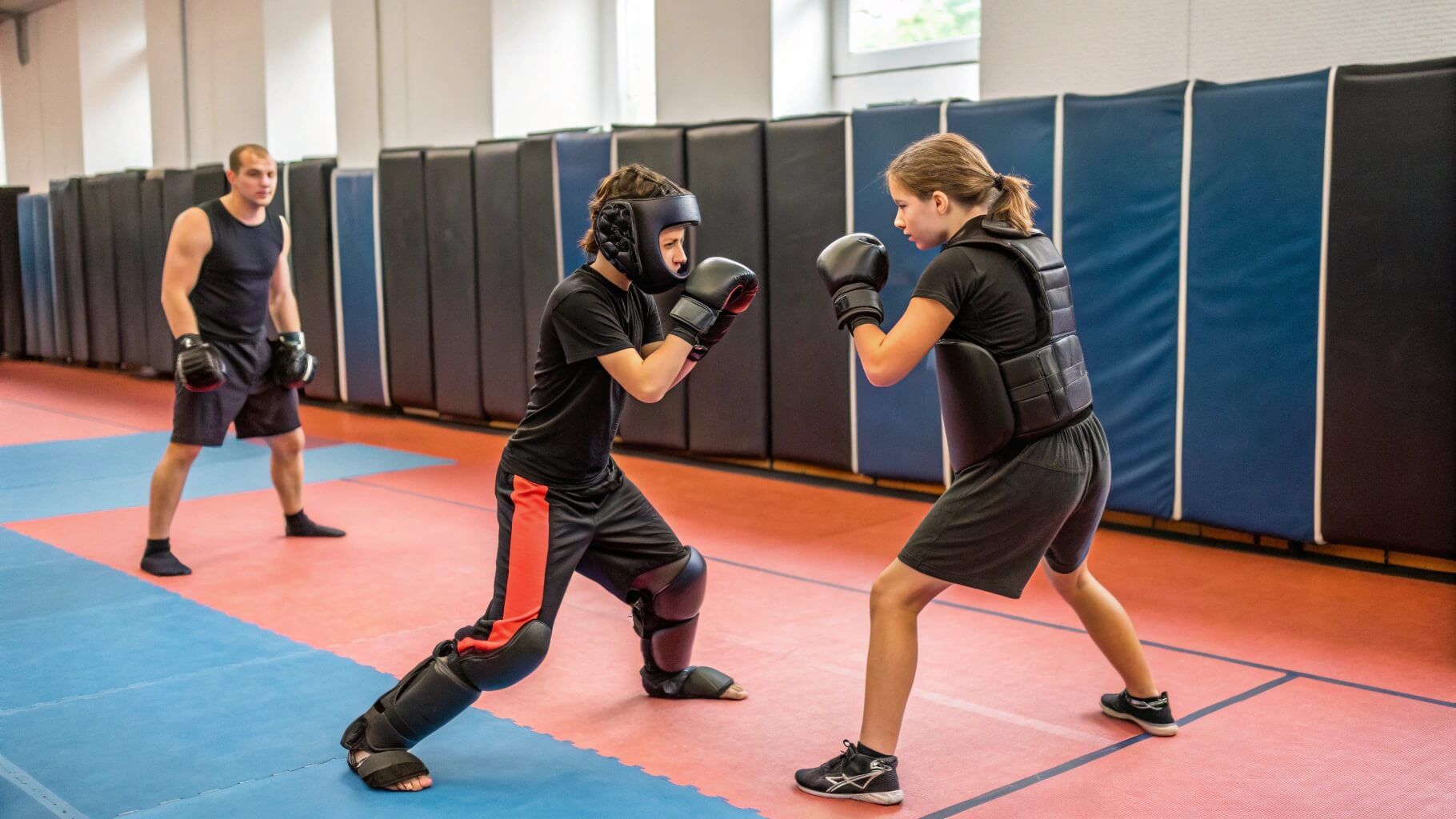What Every Parent Should Know Before Enrolling Their Teen in Combat Sports
Nate Holland · Jun 23, 2025 · 6 min read

Your teen has been giving hints, then. Perhaps they started shadowboxing in the kitchen, or maybe they are binge-watching UFC highlights. Regardless of the sign, combat sports have taken center stage. The thought of their teen entering a martial arts gym can cause mixed emotions for many Australian parents. Although you enjoy their energy, the idea of punches and takedowns can be rather confronting.
Let's pause and have a proper conversation before you either sign them up for the first gym you come across on Google or say, "No way, mate!" One of the most satisfying choices you can make for your teen is enrolling them in a combat sport; it will help them to develop resilience, discipline, and a good dose of self-confidence. Still, this is a choice worthy of some thought. Every Australian parent should be aware of the following.
More Than Just a Bit of Biff: Unanticipated Benefits
For a moment, forget the Hollywood preconceptions. A decent combat sports facility is not about producing aggressive cage fighters. It relates to creating better people. For a teen negotiating the challenging terrain of high school and adolescence, the advantages can be transformative.
First of all, the component of physical fitness is a big bonus. Combat sports provide a dynamic, full-body workout, improving cardiovascular health, strength, metabolism support and coordination in a world of screens and lazy lifestyles. The actual magic, though, usually occurs inside. Better focus in the classroom and more sense of responsibility at home follow from the discipline needed to learn and perfect techniques.
It's amazing to see your teen's confidence rise as they become proficient in a new ability or graduate to their first belt. They come to value their teachers, their training partners, and—above all—themselves. This is about creating character from the ground up, not only about fighting.
A Clear-Eyed View of the Risks
Let us now specifically address the elephant in the room: injuries. Indeed, combat sports are contact sports, and as such, one runs the danger of injury. Along the way are bumps, bruises, and the odd strain. Still, a good gym will always give safety top priority over all else.
Surprisingly rare in well-supervised training environments are major injuries. Technical, under-control learning is emphasized rather than unbridled brawling. Teachers are taught how to run sparring sessions, make sure protective gear is used correctly, and guide teenagers toward hard training while still looking after their bodies and their partners. Open communication with your teen about listening to their body, reporting any injuries, and realizing that there is no guilt in tapping out is absolutely vital.
Finding a Top-Notch Gym: Not Every Dojo Is Made Equal

Arguably the most important piece of the jigsaw is this one. A good gym will be a motivating, empowering space. Often called a "McDojo," the wrong one could be a waste of money at best and a negative influence at worst.
So, how can you identify the distinction?
- First, finish your homework. Search for gyms featuring seasoned teachers with strong lineage in their chosen martial art. Ask for their credentials without feeling embarrassed.
- A good indication is a gym providing a free trial class. This is your opportunity to watch a session, tour the facilities, and experience the culture.
- Watch the environment. Is it inclusive and friendly? Do the pupils seem involved and polite? A positive sign is a mix of mat skill levels, with more experienced athletes eager to assist novices.
- Search for a spot that is spotless and highly emphasizes safety procedures.
- Above all, trust your gut. Anything that seems strange most likely is what it is.
The Social and Mental Payoff
Beyond the obvious, teenagers' mental health gains are significant. The gym can start to be a haven where one can relax from the demands of social life and academics. During training, the emphasis needed is a kind of mindfulness that helps teenagers remain present and clear their heads.
Not in the way you might believe, but rather here is where the pragmatic side of self-defense finds expression. It's not about picking up street fight-winning techniques. It's about learning to have the confidence to leave conflict behind me. For this, disciplines like jiu jitsu for self defense are especially brilliant since they teach leverage and technique over brute force, enabling a smaller person to control a larger opponent without necessarily throwing a single punch. This information helps one develop a calm confidence that can be a strong deterrent to bullies.
Moreover, the friendship of a good gym offers a much-needed social outlet and a feeling of belonging that is quite important during the teenage years. Your teen will be surrounded by driven people all striving to improve themselves, so foster a community that honors diligence and mutual respect.
The Last Bell
It is a personal decision whether or not you want your teen involved in combat sports. But once you pass the scary façade, you will discover a world full of chances for development. This trip can provide them the mental and physical tools they need to negotiate life with more resilience, discipline, and confidence. So, have the talk, do some research, and you might find it to be among the best investments you could make for their future.
What impressions or observations of teenagers engaged in combat sports reflect your own? Comment with your observations in the space provided below.
